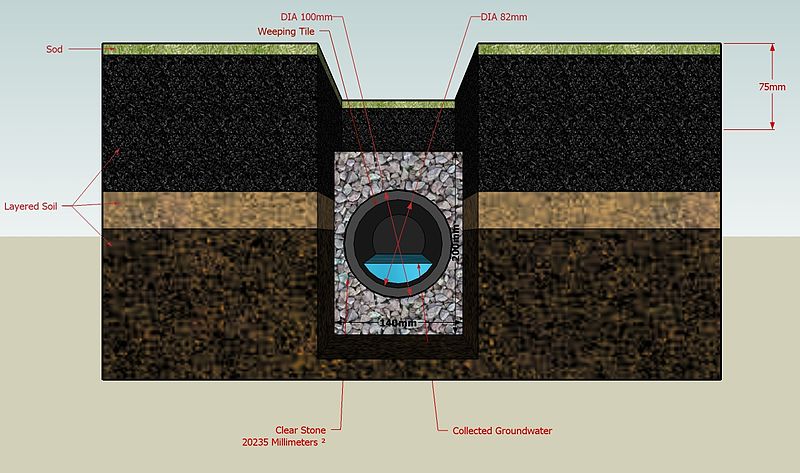<p>In the past few years with hurricanes and storms, basement flooding has become a much more prominent problem. Even though there is the option of insurance to cover any loss, we know that it is impossible to replace some of the items we’ve saved and stored away.</p>
<p>The important things like photo albums, baby clothes, or other mementos we hang onto can be beyond repair in minutes. Even without those, the damage cause by flooding alone is hazardous to our health. In these cases, investing in prevention is much less painful than dealing with the aftermath of water damage.</p>
<p style="text-align: center"><img class="aligncenter" title="Exterior French Drain" alt="File:French drain diagram.jpg" src="http://upload.wikimedia.org/wikipedia/commons/thumb/d/de/French_drain_diagram.jpg/800px-French_drain_diagram.jpg" width="600" height="373" /></p>
<h2>DIY Solutions:</h2>
<ul>
<li>Make sure the area surrounding your home slopes away from the foundation. Just like a puddle, water will run and gather at the lowest point available. When the ground is frozen, the problem can become greater because there is nothing to absorb it along the way.</li>
</ul>
<p>Frozen ground also complicates things by solidifying and creating a gap between itself and the foundation of your home letting more water in.</p>
<ul>
<li>Leave a gap between your plants and the foundation. Not only do they gather water, but as they grow they can damage what they come in contact with.</li>
</ul>
<ul>
<li>Make sure your gutters are in good condition, clean and extend them to drain at least 5ft from the home.</li>
</ul>
<ul>
<li>Seal all utility entry points, window wells and cracks in the foundation with a water repellent sealant.</li>
</ul>
<ul>
<li>Check your service connections that lead out to the sewer to see if they are blocked by roots or debris.</li>
</ul>
<p>These are basic preventative methods, and although there is no absolute guarantee you won’t experience leakage, you can have a contractor help you with more costly but effective suggestions.</p>
<h2>Professional Suggestions:</h2>
<ul>
<li>Install a sump pump which is connected to your homes electrical system and will automatically pump encroaching water a safe distance away from your house. Battery powered back up pumps are also available.</li>
</ul>
<ul>
<li>Build a concrete apron, flood wall or levee to divert water away from seeping into your foundation.</li>
</ul>
<ul>
<li>Install waterproof a concrete floor which can be painted and then sealed with a water proofer. Ceramic tiles are also an option, but if your foundation is cracked, it is easy to install tiles improperly so that they crack over time as well.</li>
</ul>
<ul>
<li>Have a contractor inject hydroclay around your foundation filling in and seal any gaps that may have developed over time.</li>
</ul>
<ul>
<li>If you are in the process of building or finishing the basement, having a contractor install floors and walls impervious to water. At this state, you have the best chance of avoiding flooding altogether.</li>
</ul>
<ul>
<li>Install a french drain. There are two types, interior and exterior, which are both highly recommended for flood prone properties.</li>
</ul>
<ul>
<li>An exterior french drain, or footing drain, is a slightly sloped deep trench that surrounds the home’s perimeter. It is filled with round gravel and a perforated pipe that diverts water away.</li>
</ul>
<ul>
<li>An interior french drain is built into the perimeter of the floor inside your basement. Concrete against the wall is removed to fit round gravel and a perforated pipe that intercepts water as it enters the basement. It then drains into a sunken collection tank and is pumped to a safe distance by a sump pump.</li>
</ul>
<p>Whichever you chose, taking steps towards prevention is always going to be better than losing irreplaceable belongings and scraping mold off your ceiling in a hazmat suit. Check if you are living in an area that deals with flooding on a consistent basis, and look at the foundation of the home you live in, because you may need to invest in one of these solutions for yourself.</p>
<h5>Featured images:</h5>
<p><span class="license">License: Creative Commons</span></p>
<p><span class="source">image source</span></p>
<p>For more information on flood proofing or other disaster prevention visit us at Puro Clean.</p>

How To Flood Proof Your Basement
